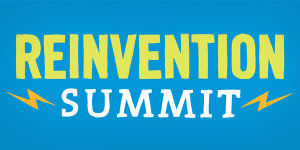NYC part two
The big day has arrived. I’m New York City bound. But, before I head out, I have some other important business. It’s my middle son’s last day of school, and it’s my pleasure to escort him to kick off his day. I throw this in because no matter how passionate I am about my career, it doesn’t hold a candle to my family. In many ways, my boys are the inspiration behind my work.
You get the picture.
Okay, Lincoln delivered. Now, it’s time to catch a plane. Little did I know when I boarded my flight how powerfully the next two days would impact me. Namely, I would experience the city through the eyes of locals for the first time, and I would discover a strong sense of community that I had never experienced as a tourist.
Laura and I had a full agenda, which included meeting and sharing in conversation with Fast Company’s Noah Robischon and Ellen McGirt, JetBlue’s Dean Melonas, social media strategist Zeb Dropkin, and freelancer/improv performer Amanda Hirsch. Oh, yes, and attending FC’s 100 Most Creative People in Business.
I don’t think we could have met with a more welcoming, bright, inspiring, and kind group of people. I offer a heartfelt thanks to each of them. I am a better person for knowing them, and I look forward to lasting friendships.
Let me share my Fast Company experience:
The days leading up to our arrival, Ellen and I emailed back and forth. This is when I discovered Ellen’s a beer drinker. Score. I liked this. I have always found women who drink beer tend to be real, fun, and down-to-earth.
We were off to a good start, and it only got better.
Upon meeting Ellen, a person I hold in extremely high regard, she hugs me. In that moment, a friendship is born. All of a sudden, the fact that Ellen writes for Fast Company fades. We are just people being people, enjoying each other’s company. Amidst a television commercial being shot on location, we take a quick, quiet tour of the headquarters.
We are on the 29th floor of 7 World Trade Center, and I see Ground Zero firsthand for the first time. It affects me more than I let on because I want to hold steadfastly to the positive vibes we’ve generated. Moments later, I am grateful to catch a view of the Statue of Liberty and the Hudson River where Captain Sullenberger landed his aircraft safely sparing the lives of every member on board. The good vibes are back, and we head out for drinks.
Ellen, Laura, and I swap stories. We cover topics ranging from Montana and gift chains to Steve Jobs and our own families. Then, Noah joins us, and the dialog grows. I am genuinely happy because, to me, this is what life is all about: people.
We do touch on journalism and all parties seem to truly care about the thoughts and ideas of each other. We discuss how people get their daily news, story development and execution, and opportunities for media collaboration. And, I think to myself, this is why journalism, whatever it might look like, will survive and thrive. It’s because there are people inside news organizations and consumers outside of them that are truly committed to sharing stories.
And, as I state on my website, stories are how we celebrate the past, embrace the present, and create the future.
Moral of the story: Ellen and Noah rock. So do millions of people that walk our beautiful earth. Put yourself out there. Discover new friends. Build community. And, share stories!
